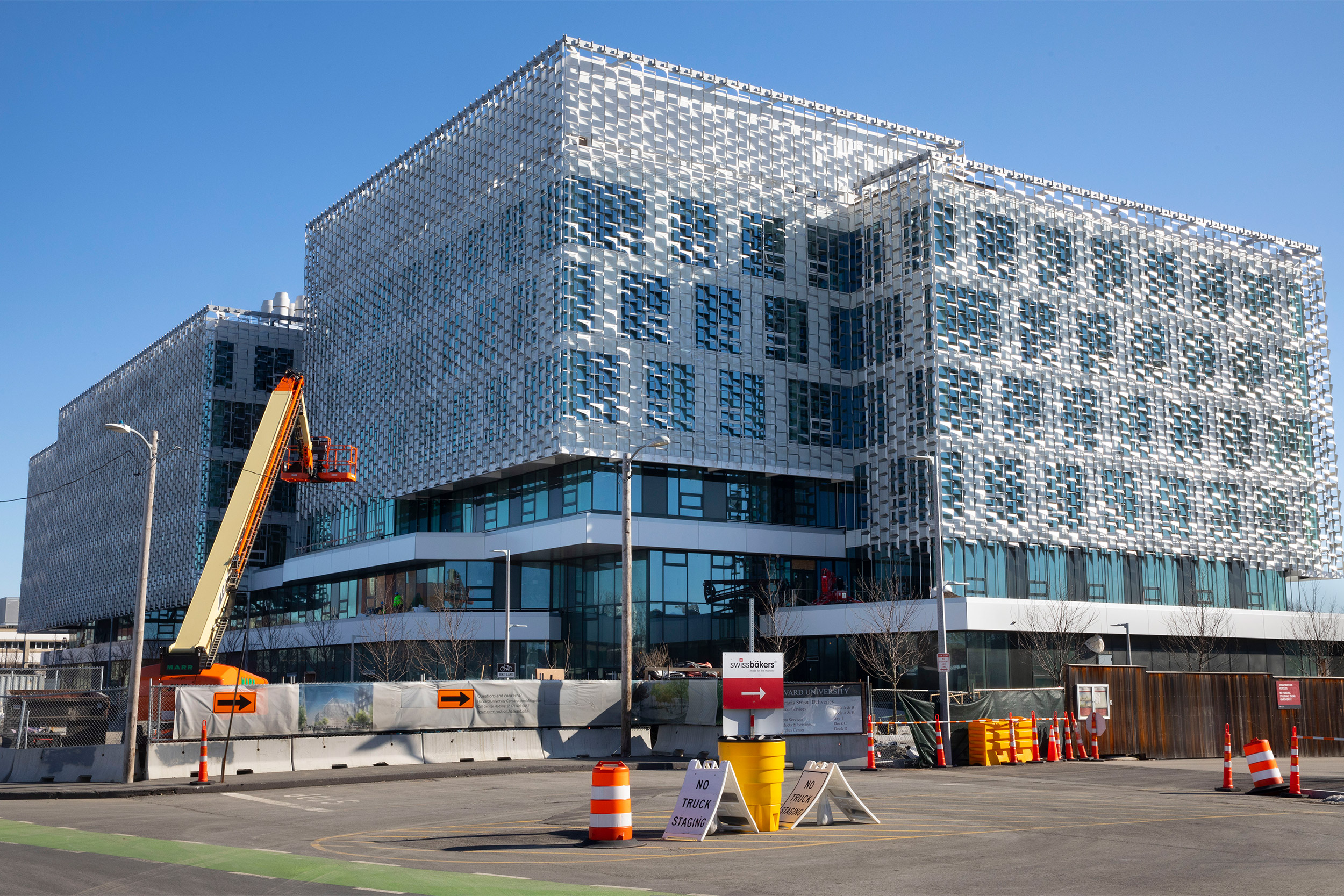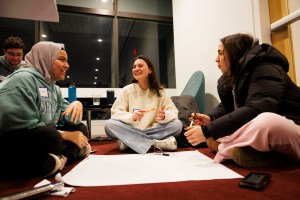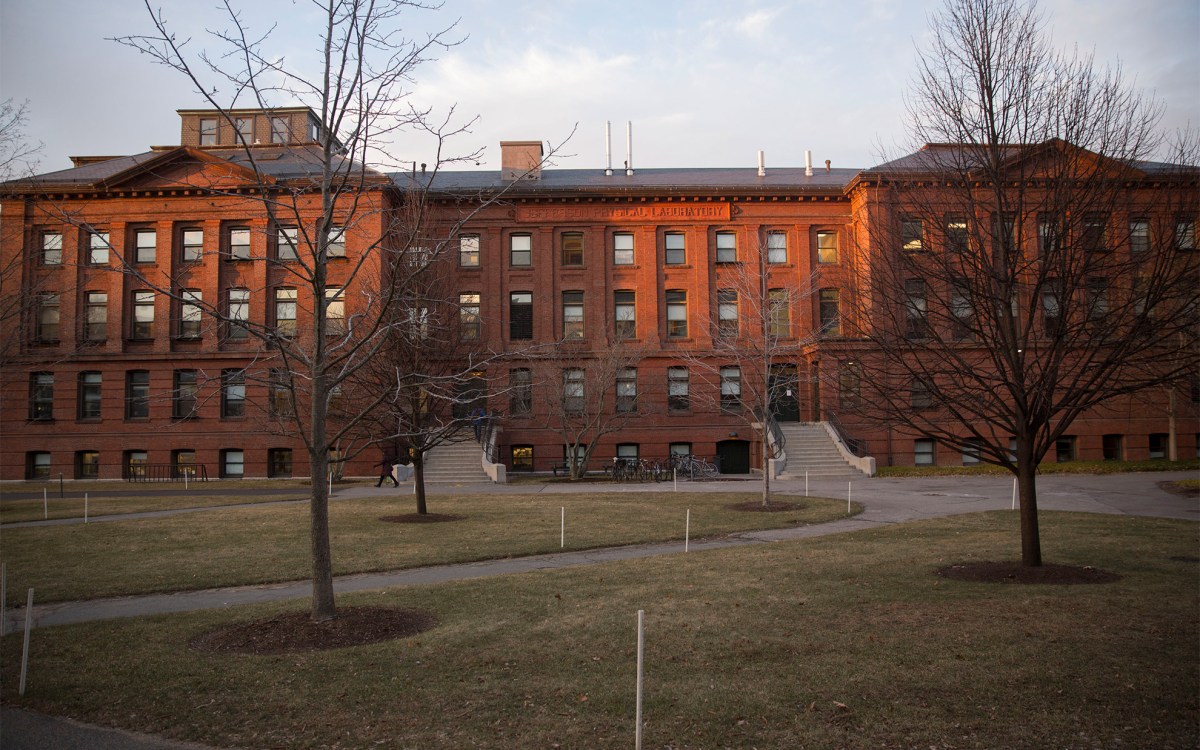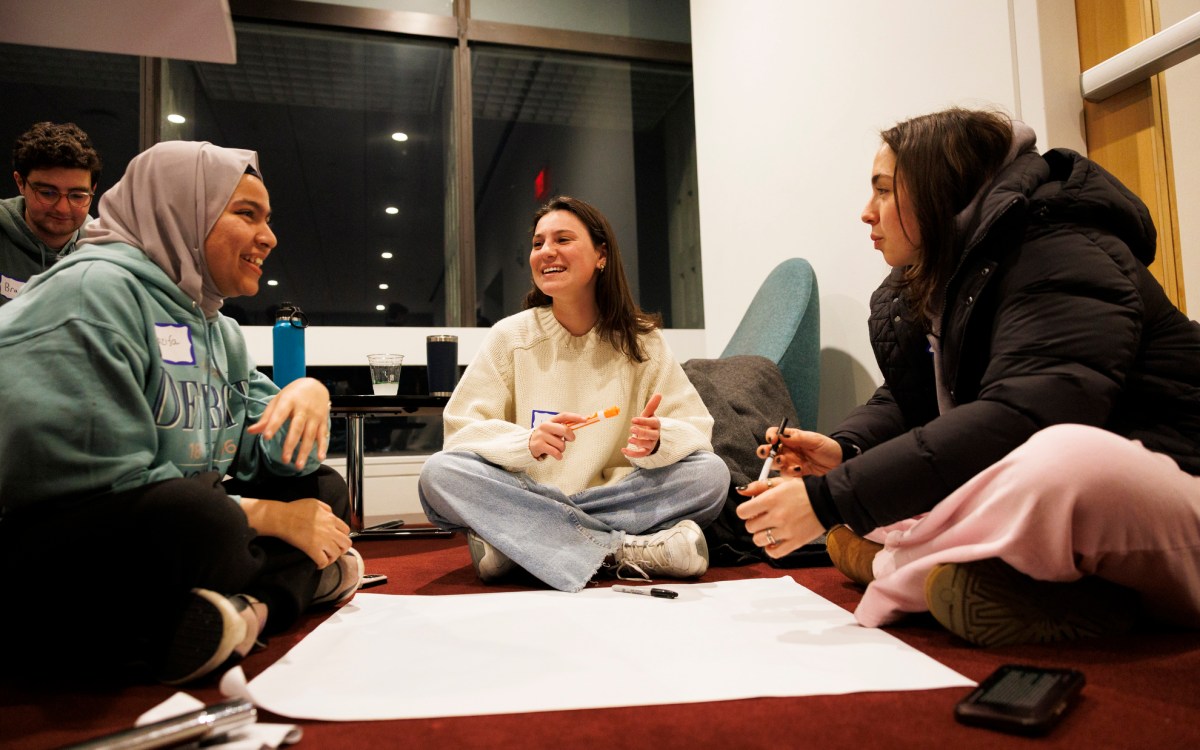
Construction on Harvard’s Science and Engineering Complex was halted due to COVID-19.
Kris Snibbe/Harvard file photo
Managing construction’s return to a ‘new normal’
Harvard officials detail the University’s responsible approach to resuming campus construction
When students, faculty, and other personnel vacated campus in late March, Harvard’s lecture halls, offices, and community spaces weren’t the only areas left empty. The University’s many capital projects also had to quickly pivot from normal operations and leave sites across campus after Boston and Cambridge temporarily halted construction work to protect public health.
Now, as each city has begun a phased approach to a “new normal,” some of those projects have started to resume operations.
The Gazette spoke with Vice President for Campus Services Meredith Weenick, Director of Capital Projects for the Faculty of Arts and Sciences Petrina Garbarini, and Managing Director of Harvard Capital Projects Joe O’Farrell to learn more about Harvard’s decision to restart construction.
Q&A
Meredith Weenick, Petrina Garbarini, and Joe O’Farrell
GAZETTE: Can you walk us through the University’s decision to resume campus construction?
WEENICK: As Provost [Alan] Garber noted in his message to the University about planning for fall 2020, decisions at Harvard are complex, require immense planning, and are guided by our academic and research mission and our responsibility to ensure the safety of every member of our community. As we slowly move to resume things paused by the COVID-19 pandemic, capital projects are at the forefront because ensuring that our students, faculty, and staff have the appropriate resources to resume their work when we can all safely return to campus is at the very core of our mission.
Knowing that the pause on construction would be lifted once it was determined it was safe to do so, we spent the past several months working internally and in concert with industry experts to carefully think about how we could move critical capital projects forward without sacrificing the health and safety of our workers and community.
Consistent with the phased approaches of Cambridge and Boston, we made the decision to begin work again after we were sure that we could bring the necessary workforce back on campus in a manner consistent with the recommendations of the CDC, state, and local officials regarding best practices for limiting exposure to the virus on campus.
Having said that, it is important to note that one of the most effective safety tools we have is the one that we instituted in March by reducing the density of people on our campus. By working and learning remotely, our students, faculty, and staff are playing an enormous role in making it safer for the workers who are on campus. Until repopulating the University becomes safe again, maintaining that social distancing is one of the best things we can do to protect our community.
“Each project requires its own solutions, and our team is working with our contractors to confirm implementation of appropriate safety guidelines that are tailored to the needs of each specific site.”
Petrina Garbarini
GAZETTE: Studies have shown that Massachusetts has begun to flatten the curve, but risk remains. How is the University keeping workers safe as they return to campus?
GARBARINI: It will be far from business as usual for work that does resume. We will be working with all our contractors to ensure that each of them incorporates all appropriate recommendations of health officials at every level. For example, every person visiting or working on a site will be required to use the appropriate personal protective equipment (PPE) and make appropriate use of the handwashing stations provided at each project. We will also be requiring that social distancing recommendations are met at construction sites and building entry points by using staggered start times and alternate entries in some cases. Populated places such as lunch areas and parking lots will be dispersed in order to reduce person-to-person interactions. When a task absolutely requires two or more people near one another, enhanced PPE measures will be used.
For reasons such as building occupancy and shared use of public spaces, renovations to existing buildings pose different challenges than new construction. Each project requires its own solutions, and our team is working with our contractors to confirm implementation of appropriate safety guidelines that are tailored to the needs of each specific site.
GAZETTE: Why is it important to resume work on these projects as soon as possible?
O’FARRELL: Moving forward on construction as quickly as the cities’ phased approaches permit is important because there are several external factors that pose potential risks to any construction site, including those on campus, if left vacant for more than a few months. Our teams across campus did excellent work mitigating those risks when we put projects on hold as we vacated campus in March, but they need to return as quickly as possible to assure that no further risks are introduced by leaving the sites in a state of incompletion.
With the summer bringing more extreme weather in the region, construction sites that are not fully enclosed will run the risk of wind or water damage. Each site must be safely and completely enclosed to limit this risk, a process that can take anywhere from several months to a year. The sooner crews can resume building enclosures, the less likely it is that buildings will be affected.
Cold weather can also damage the structures, and although the next round of freezing temperatures is months away, many projects develop their schedule around the seasons. For example, exteriors are prioritized in the spring, summer, and fall months, which are better conditions for outside work, and interiors are mostly done in the winter, so people are not overexposed to the elements. Further delays may cause significant issues with buildings trying to get enclosed before the temperature drops.
“… one of the University’s planned cost saving measures is reviewing all capital projects. This generally means that those that are still in the design or planning phases will be subject to further review by the University to determine if moving forward currently is advisable.”
Meredith Weenick
GAZETTE: With both Cambridge and Boston taking phased approaches to restarting construction, how are you working with local officials as these projects begin to resume?
GARBARINI: Since the implementation of the construction ban in March, key members of the University have been coordinating closely with state and local officials to ensure full compliance with the orders. We have maintained essential safety functions while further construction has been on hold, and as we begin this phased approach to restarting these projects, we are in constant communication with local officials to ensure our sites are complying with state and local guidelines.
GAZETTE: The economic slowdown caused by COVID-19 has had a significant financial impact on the University. Could you speak to how that will impact capital projects?
WEENICK: As [Executive Vice President] Katie Lapp outlined in her message to the community last week, one of the University’s planned cost saving measures is reviewing all capital projects. This generally means that those that are still in the design or planning phases will be subject to further review by the University to determine if moving forward currently is advisable. Based on that review, some projects will be deferred to make funds available in the near term for other University needs. In general, construction projects currently underway will proceed toward completion.
Our teaching and research mission will drive decision-making as we prioritize which projects will proceed and which will be put on hold. As the University considers near-term spending on projects, those which are essential and support research, teaching, and learning will come first.
Interview was edited for clarity and condensed for space.




